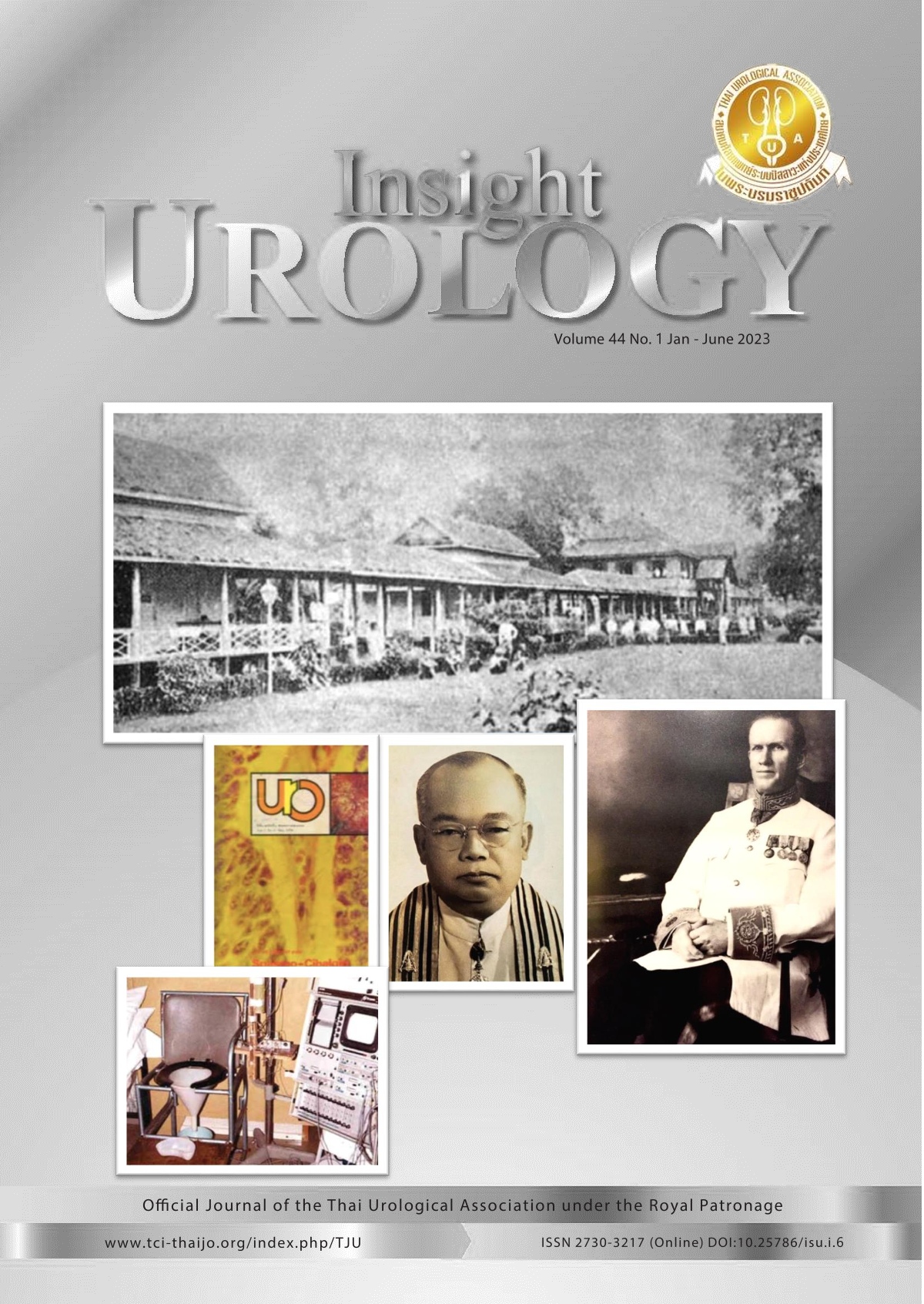Comparison of the results of bipolar transurethral enucleation and resection of the prostate with and without morcellation in treatment of benign prostatic hyperplasia
DOI:
https://doi.org/10.52786/isu.a.66Keywords:
Benign prostatic hyperplasia, bipolar transurethral enucleation and resection of the prostate, morcellationAbstract
Objective: To compare the result of bipolar transurethral enucleation and resection of the prostate with morcellation (B-TUERP-M) and without morcellation (B-TUERP) in treatment of benign prostatic hyperplasia.
Materials and Methods: This was a prospective single centre cohort study of 101 patients with prostate enlargement of more than 60 ml who underwent B-TUERP by a single surgeon between January 2020 and June 2022. Patients were divided into two groups, a B-TUERP group of 49 patients and a second group of 52 patients classed as B-TUERP-M. The perioperative outcomes followed up at 1, 3 and 6 months after surgery were evaluated.
Results: There were no significant differences in the preoperative parameters of the two groups. Comparisons between the two groups showed a shorter operative time (63.94 ± 12.01 vs 77.77 ± 11.80 min, p-value 0.000), more resected prostate tissue (65.73 ± 14.67 vs 60.73 ± 5.45 gm, p-value 0.027) and a higher post-operative hematocrit level (35.16 ± 3.97 vs 33.18 ± 3.22%, p-value 0.007) in the patients who underwent B-TUERP with morcellation. At 6 months after the procedure, better results were found in patients who had undergone B-TUERP-M regarding urine flow rate (26.33 ± 5.33 vs 20.66 ± 5.08 ml/sec, p-value 0.000), post-void residual urine volume (24.19 ± 10.93 vs 36.04 ± 16.90 ml, p-value 0.000), post-operative PSA (0.72 ± 0.43 vs 1.22 ± 0.54 mg/ml, p-value 0.000) and International Prostate Symptom Scores (5.01 ± 1.36 vs 5.71 ± 1.33, p-value 0.001).
Conclusion: Better outcomes occurred following B-TUERP with morcellation with regard to operative time, resection weight of prostatic adenoma, post-operative urine flow rate, Post-void residual urine volume, PSA and International Prostate Symptom Score than in patients treated with B-TUERP without morcellation.
References
Reich O, Gratzke C, Stief CG. Techniques and long- term results of surgical procedures for BPH. Eur Urol 2006;49:970-8.
Jacobsen SJ, Girman CJ, Lieber MM. Natural history of benign prostatic hyperplasia. Urology 2001;58:5-16.
Mebust WK, Holtgrewe HL, Cockett AT, Peters PC. Transurethral prostatectomy: immediate and postoperative complications. A cooperative study of 13 participating institutions evaluating 3,885 patients. J Urol 1989;141:243-7.
Borboroglu PG, Kane CJ, Ward JF, Roberts JL, Sands JP. Immediate and postoperative complications of transurethral prostatectomy in the 1990s. J Urol 1999;162:1307-10.
Chandrasekar P, Kapasi F, Virdi J. A prospective randomized study between transurethral vaporization using plasmakinetic energy and transurethral resection of the prostate. Eur Urol Suppl 2006;5:309.
Eaton AC, Francis RN. The provision of transure- thral prostatectomy on a day-case basis using bipolar plasmakinetic technology. BJU Int 2002;89:534-7.
Mohamed S, Ahmed T, Mahmoud M, Elawady H, Abuelnaga M, Shabayek M, et al. Two-year follow-up in bipolar transurethral enucleation and resection of the prostate in comparison with bipolar transurethral resection of the prostate in treatment of large prostate. Randomized controlled trial. J Urol 2019;133:192-8.
Liu C, Zheng S, Li H, Xu K. Transurethral enucleation and resection of prostate in patients with benign prostatic hyperplasia by plasmakinetic. J Urol 2010;184:2440-5.
Thaidumrong T, Duangkae S, Jiramanee V, Kalapong J, Psansalhidikam P, Tuipae K. Transurethral anatomical enucreation of prostate (TUAEP) in benign prostatic hyperplasia with bipolar system: first study in Thailand. J Med Assoc Thai 2019;102:20-5.
Emberton M, Andriole GL, de la Rosette J, Djavan B, Hoefner K, Navarrete RV, et al. Benign prostatic hyperplasia: a progressive disease of aging men. Urology 2003;61:267-73.
Zhao Z, Zeng G, Zhong W, Mai Z, Zeng S, Tao X. A prospective randomized trial comparing plasmakinetic enucleation to standard transurethral resection of the prostate for symptomatic benign prostate hyperplasia three-year follow-up results. Eur Urol 2010;58:752-8.
Neill MG, Gilling PJ, Kennett KM, Framton CM, Westenberg AM, Fraundorfer MR, et al. Randomized trial comparing holmium laser enucleation of prostate with plasmakinetic enucleation of prostate for treatment of benign prostatic hyperplasia. Urology 2006;68:1020-4.
Davide A, Celeste M, Alessandro V, Herrmnn TRW, Lima E, Mirone V, et al. Bipolar endoscopic enucleation versus bipolar transurethral resection of the prostate: an ESUT systematic review and cumulative analysis. World J Urol 2020;38:1177-86.
Julia F, Rodrigo S, Philipp P, Single A, Lusuardi L, Netsch C, et al. Morcellator after endoscopic enucleation of the prostate: efficiency and safety of currently available devices. Eur Urol 2022;8:532-44.
Angsurak C, Kochakarn W, Leenanupunth C, Kongchareonsombat W, Viseshsindh W, Kijvikai K, et al. Is the amount of resected prostate tissue from transurethral prostatectomy related to outcome?. Thai J Urol 2018;39:9-16.
Downloads
Published
How to Cite
Issue
Section
License
Copyright (c) 2023 Insight Urology

This work is licensed under a Creative Commons Attribution-NonCommercial-NoDerivatives 4.0 International License.



